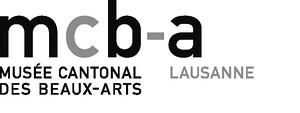Trembling Times
May 19–August 20, 2017
Place de la Gare 16
PLATEFORME 10
1003 Lausanne
Switzerland
Hours: Tuesday–Sunday 10am–6pm,
Thursday 10am–8pm
T +41 21 318 44 00
mcba@plateforme10.ch
The Musée cantonal des Beaux-Arts, Lausanne, is hosting the first solo exhibition dedicated to Yael Bartana (b. 1970 in Kfar Yehezkel, Israel, lives and works in Berlin, Tel Aviv and Amsterdam) in Switzerland. Curated in close collaboration with the artist, Trembling Times features works spanning the artist’s whole career, and is structured around the trilogy And Europe Will Be Stunned (2007–2011), spotlighting the tensions that pervade Bartana’s entire oeuvre: between reality and fiction, pathos and irony, hope and despair, return and departure, nostalgia and the quest for a break with the past.
In her earliest works, Yael Bartana watches the world through her camera lens, filming exact, sparing sequences whose only comment is in their title. Narration results not so much from the act of telling a story, but rather because the cinematic techniques underpinning the images—framing, slow-motion effects, editing, an abruptly interrupted soundtrack—work together to “fictionalize” the real. The field of reality that the artist constantly returns to is Israel, the country where she spent her formative years and where she shot most of her early videos, yet taking the stance of an outsider.
Even before she filmed what was to become the trilogy And Europe Will Be Stunned, Bartana produced videos that adumbrated the move into a mise-en-scène and a specific cinematographic language. In The Politics of Aesthetics, Jacques Rancière writes that “It is not a matter of claiming that everything is fiction […] Politics and art, like forms of knowledge, construct ‘fictions,’ that is to say material rearrangements of signs and images, relationships between what is seen and what is said, between what is done and what can be done.” In And Europe Will Be Stunned, Yael Bartana is working at the very heart of the particular truth regime of fiction. She put together a narrative in three parts, fostering a troubling sense of uncertainty in the viewer as to the “truth” of what they are watching. The far-reaching sense of disquiet instilled by the artist’s blend of historical reality and political imagination achieved perhaps its most surprising expression in a tale Bartana shared in an interview with Erika Balsom commissioned for the Lausanne publication. Having seen the trilogy at the 54th Venice Biennale (2011), where Bartana represented Poland in a further reality effect at play in the construction of her creative discourse, an old Israeli man told his wife it was the best documentary he had ever seen, unwittingly echoing the questions Bartana constantly seeks to answer: “Can an artist create history? Can an artist create reality?”
For more than 15 years now, Yael Bartana has been building up a prolific oeuvre oscillating between documentary, fictionalised versions of historical events, and political utopias. From her earliest videos like Trembling Time (2001) to such recent pieces as True Finn (2014), her work betrays a fascination with ceremonies and social rituals, and with the role of the latter in the shaping of communities and individuals. Yet these works are at a far remove from any direct documentary mode; modelled on the aesthetics of ritual, they are above all performative creations the audience is won over by without realising it. Her films point up the fact that cinema is itself a ritual and that the camera, perhaps better than anything else, imitates ritual in its capacity to fetishise, to seduce and to draw us into the ceremony we are witnessing.
Exhibition curator: Nicole Schweizer
Publication
Yael Bartana
Bilingual reference monograph in English and French, edited by Nicole Schweizer, with essays by Emmanuel Alloa, Nora Alter, Juli Carson and Gil Z. Hochberg, and an interview with the artist by Erika Balsom.
Musée cantonal des Beaux-Arts de Lausanne & JRP l Ringier, Zurich 2017.
Discover the full program on the Museum website: www.mcba.ch.


